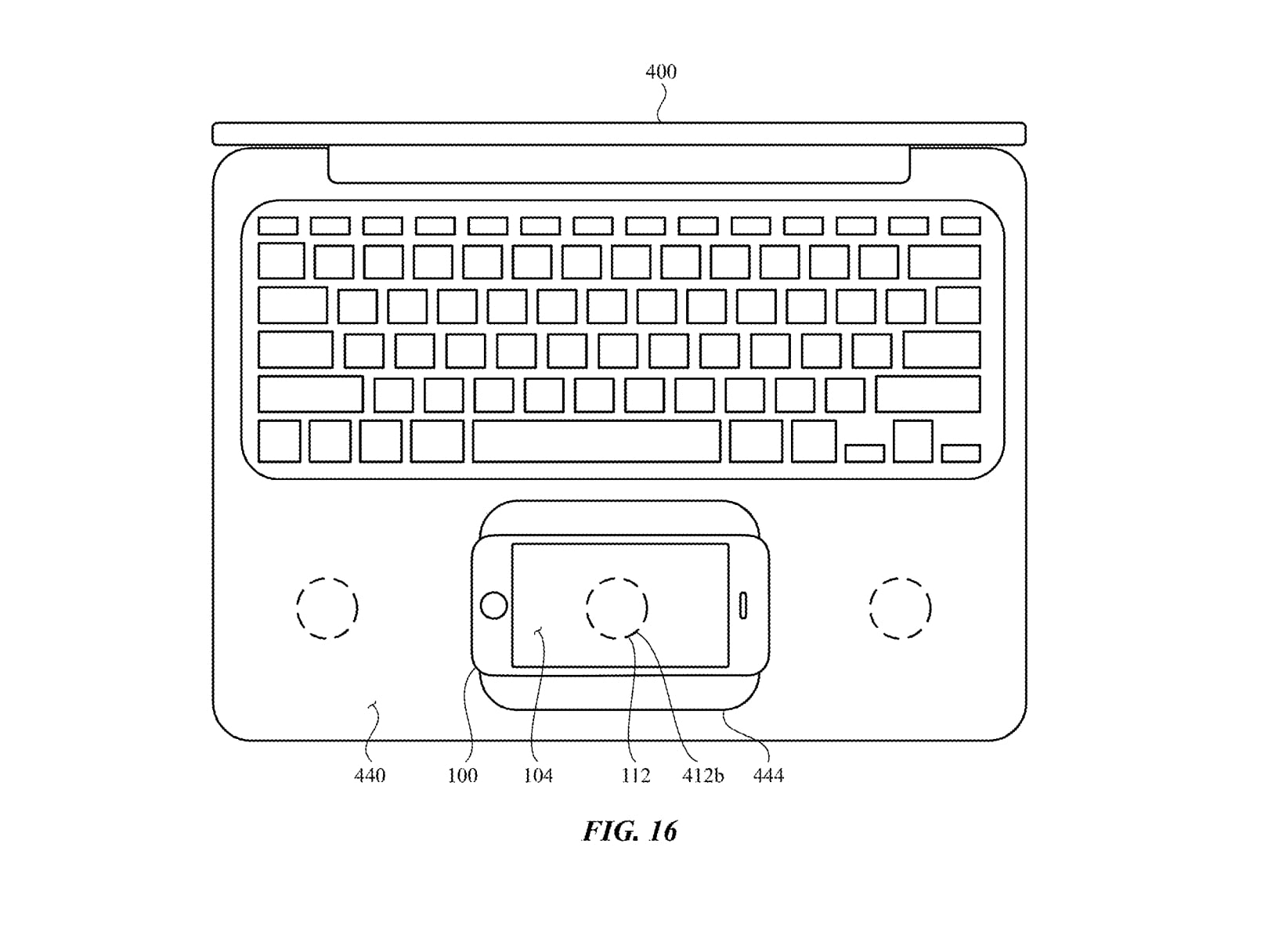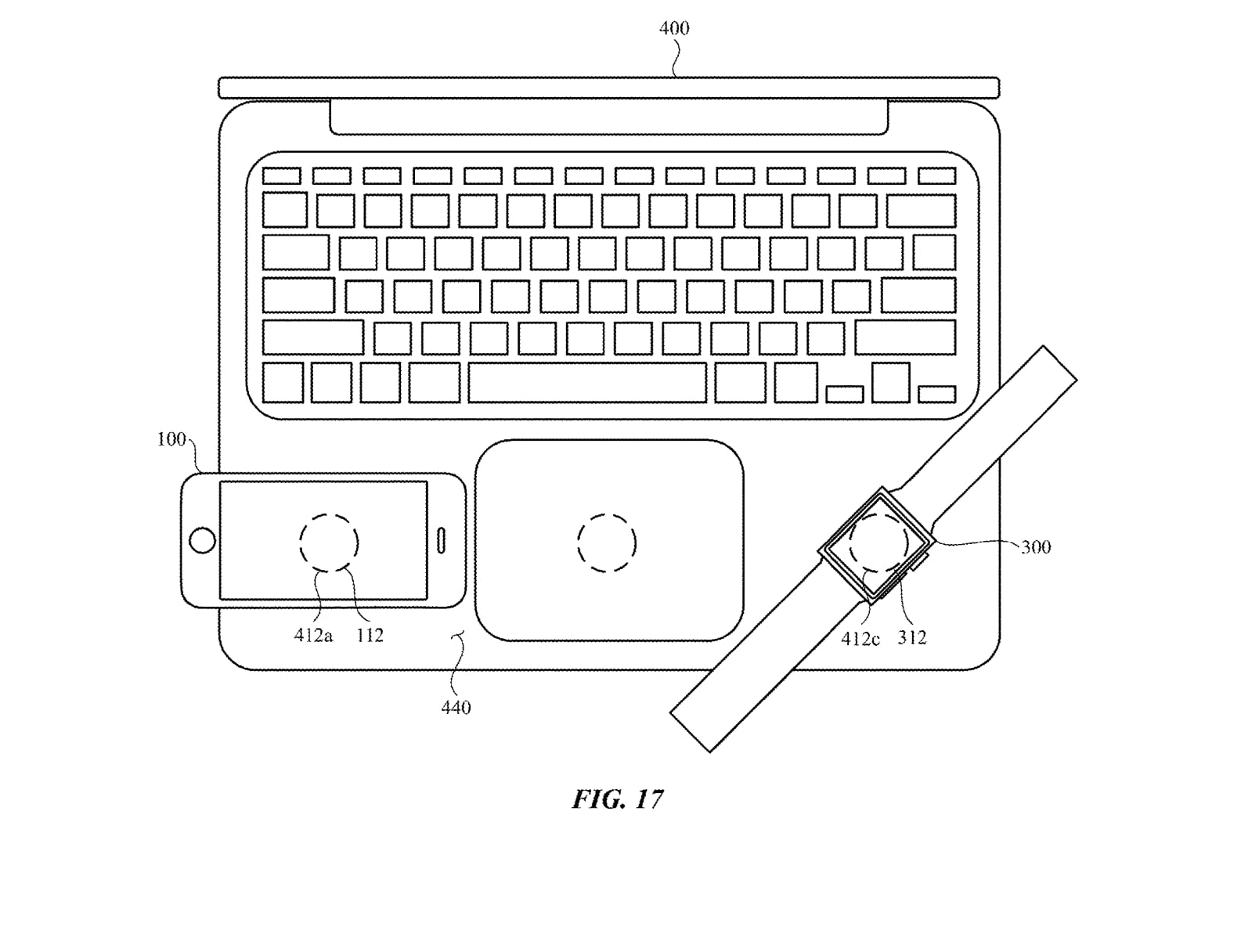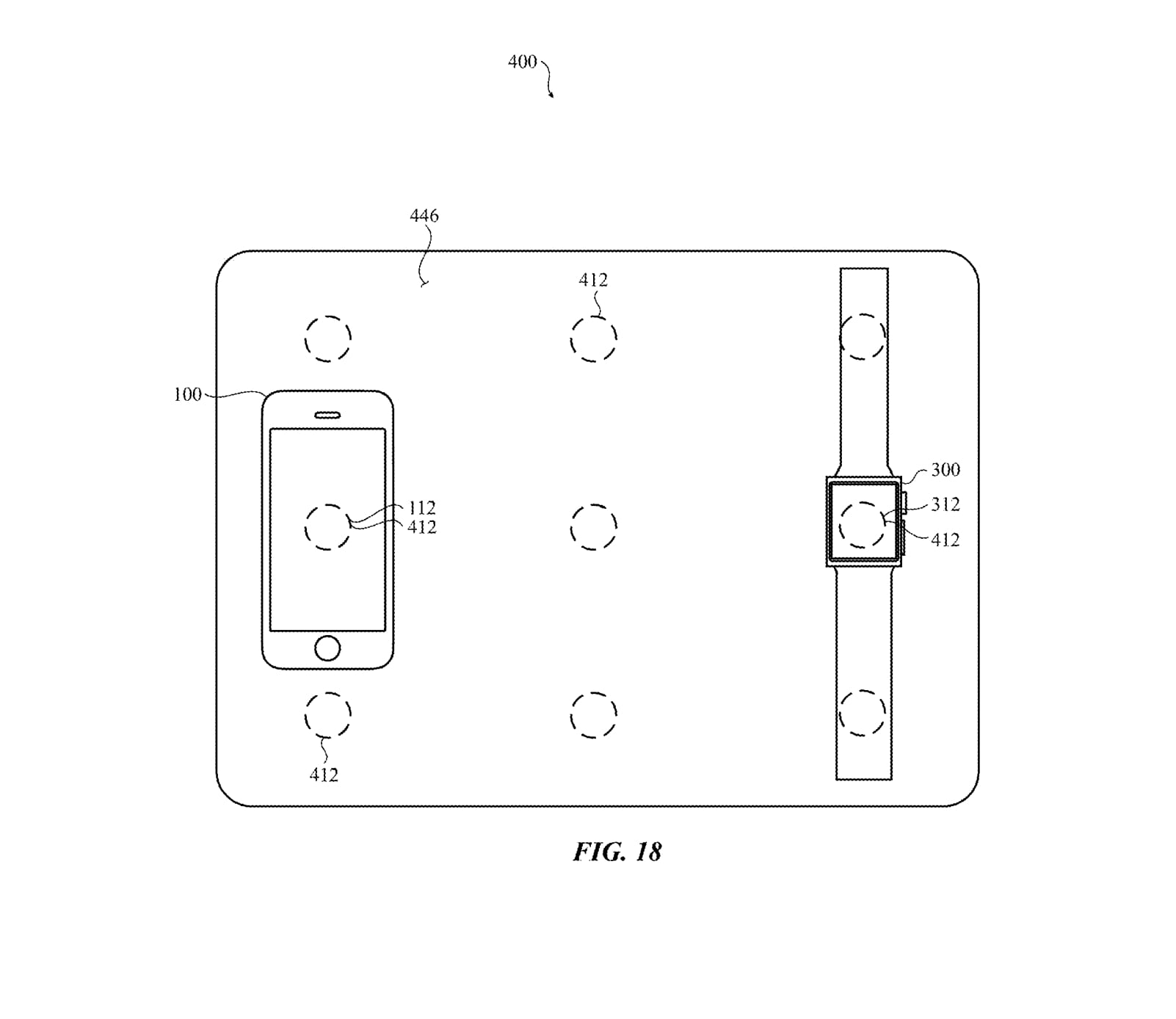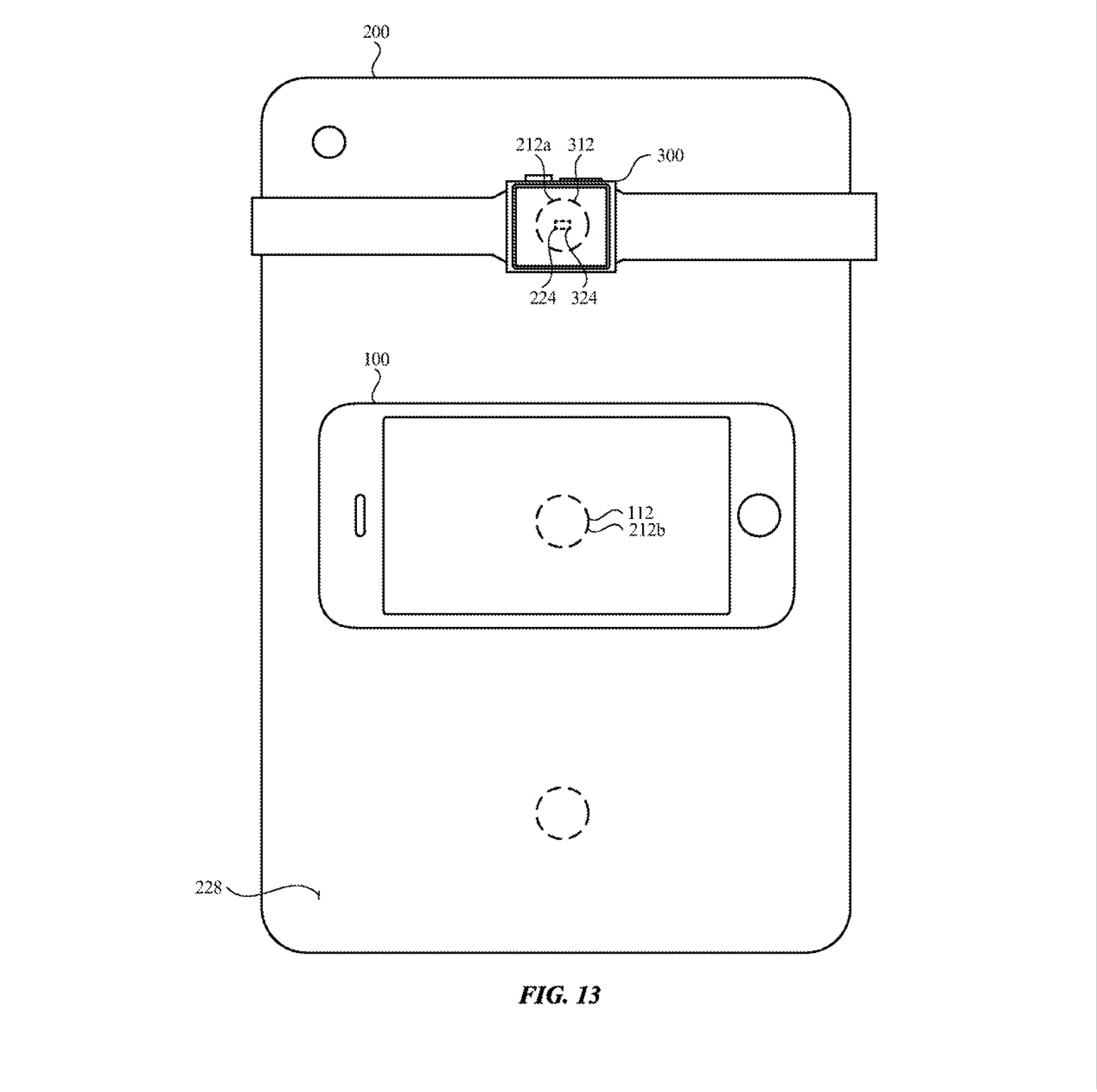Apple could be playing with the idea of including wireless reverse charging on its products, according to new patents spotted by Patently Apple. The patents suggest the use of two-way charging coils in places like the trackpad, palm rest, as well as rear casing of MacBook laptops.
As seen below, the diagrams in the patent suggest that Apple is considering what Samsung has already accomplished with the wireless QI charging in the trackpad of the Galaxy Book Flex. You can see an iPhone, as well as an Apple Watch, sitting on the palm rest of the MacBook in spots where there appear to be inductive charging coils. A secondary diagram also shows the rear casing of an iPad, with the Apple Watch and an iPhone receiving charging, too. So there remains the possibility that this isn’t something that is just for MacBooks.
The patents come from two separate filings at the United States Patent and Trademark Office. Both are titled “Inductive charging between electronic devices.” In typical language, Apple explains that the patent is for “an electronic device and methods for inductively charging an electronic device using another external electronic device.”
Apple also describes the common problem of using cables and external power to charge, especially when traveling. This is inconvenient, according to Apple. “For example, some devices may be charged using a universal serial bus (“USB”) connector or cable. However, despite having standardized connectors and cable, each device may require a separate or dedicated power supply to charge. In some cases, having separate power supplies for each device may be burdensome to use, store, and/or transport,” reads the patent.
Patents don’t always end up becoming final products, so there’s the possibility that this may never come to life, but it is something that Samsung has managed to do. The Galaxy Book Flex has a QI charger in the trackpad, and select Galaxy phones also have a “Wireless PowersShare” feature which lets you charge other devices like earbuds by tapping them to the rear of the phone.
While all iPhones from the iPhone 8 onward have Wireless QI charging support (and the iPhone 12 lineup, Magsafe), you can’t “share” the power to charge your other devices. FCC filings, though, reveal that the new iPhone 12 might have a hidden, unactivated feature that allows for reverse wireless charging for other devices like AirPods or the Apple Watch, just like the Galaxy phones.






